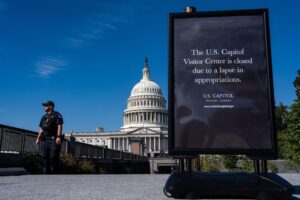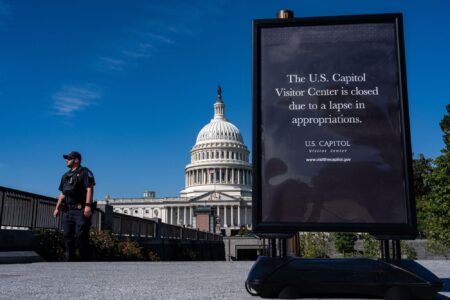Washington State Senate Approves Landmark Funding Increase to Elevate Special Education
In a decisive move to bolster support for students with disabilities, the Washington State Senate has recently sanctioned a substantial funding increase dedicated to special education. This landmark decision addresses persistent disparities in educational resources and services, signaling a renewed legislative commitment to fostering equitable learning environments statewide. The infusion of funds is poised to enhance instructional quality, expand specialized staffing, and upgrade essential educational technologies within public schools across Washington.
Significant Boost in Special Education Budget: A New Era for Washington Schools
The Washington Senate has passed a historic budget increase aimed at transforming special education programs throughout the state. This funding surge is designed to equip educators with the tools and personnel necessary to provide tailored, high-quality education to students with disabilities. Lawmakers highlighted that this investment will close critical gaps in staffing levels, professional training, and instructional resources, marking a major stride toward comprehensive inclusion reforms.
Primary objectives for the allocated funds include:
- Recruitment of additional specialized professionals such as speech therapists, occupational therapists, and school psychologists to reduce individual caseloads and enhance support.
- Modernization of assistive technology to facilitate improved accessibility and learning engagement for diverse learners.
- Expanded ongoing professional development programs to empower educators with innovative, evidence-based special education methodologies.
These enhancements respond to persistent advocacy from families and educators, with projections indicating that over 110,000 students across Washington will benefit from these improvements, reinforcing the state’s dedication to inclusive education.
| Funding Allocation | Anticipated Benefits |
|---|---|
| Specialized Staff Hiring and Retention | Reduced caseloads, more individualized student support |
| Assistive Technology Enhancements | Greater accessibility and engagement for students |
| Teacher Training Initiatives | Elevated instructional effectiveness |
Transformative Effects on Students and Educators
The increased funding is expected to significantly improve the availability of adaptive learning tools, personalized educational materials, and expanded therapeutic services—key components in nurturing inclusive classrooms. These resources not only aim to boost academic achievement but also support the social and emotional growth of students with disabilities, ensuring a holistic educational experience tailored to individual needs.
For educators, the funding promises smaller class sizes, enhanced professional development opportunities, and additional support staff, all of which contribute to more personalized instruction and reduced burnout. The Senate’s commitment reflects an understanding of the challenges faced by special education professionals and a desire to improve job satisfaction and retention rates.
| Metric | Pre-Funding | Post-Funding |
|---|---|---|
| Student-to-Teacher Ratio | 22:1 | 13:1 |
| Access to Adaptive Technology | Limited | Broadly Available |
| Annual Professional Development Hours | 6 hours | 18 hours |
| Weekly Therapy Sessions | 3 sessions | 6 sessions |
- Enhanced classroom support enables more customized teaching approaches.
- Expanded educator training introduces advanced instructional techniques and tools.
- Strengthened collaboration between special education specialists and general educators promotes inclusive practices.
Comprehensive Statewide Strategies for Effective Resource Deployment
To guarantee equitable distribution and effective utilization of the increased funds, the Senate’s plan incorporates robust statewide implementation strategies. These include broadening professional development opportunities, integrating cutting-edge inclusive technologies, and fostering partnerships between school districts and community organizations. Centralized training centers and digital platforms will serve as hubs for resource sharing and educator support, ensuring schools are well-equipped to meet diverse student needs.
Additionally, the initiative emphasizes the creation of data-driven monitoring systems to track student progress and resource allocation in real time. This approach enables timely interventions and informed policy adjustments, ensuring continuous improvement in service delivery.
| Strategy Component | Details | Expected Results |
|---|---|---|
| Professional Development | Ongoing training and certification for special education staff | Higher quality instruction and updated teaching practices |
| Technology Integration | Deployment of assistive devices and adaptive software | Increased student participation and learning gains |
| Community Partnerships | Collaboration with nonprofits and local agencies | Expanded support networks and wraparound services |
| Data Monitoring Systems | Real-time tracking of educational outcomes and resource use | Proactive adjustments and enhanced accountability |
Optimizing Fund Utilization: Best Practices and Recommendations
Maximizing the impact of the newly allocated funds requires strategic planning and ongoing evaluation. Prioritizing teacher training in the latest inclusive education techniques is essential, alongside investing in adaptive technologies and classroom materials that cater to a wide range of learning needs. Strengthening collaboration between school districts and community organizations can further enhance support services, including counseling, occupational therapy, and family engagement programs.
Transparency and accountability are critical; therefore, establishing clear performance indicators and regular monitoring will help ensure funds are used effectively. The following strategies can guide optimal fund management:
- Engage stakeholders regularly: Incorporate feedback from educators, families, and students to align spending with real-world needs.
- Leverage data analytics: Use outcome data to refine funding priorities and program designs annually.
- Invest in continuous professional growth: Support ongoing education for staff to keep pace with evolving special education standards.
- Address equity gaps: Focus resources on underserved and rural communities to ensure statewide inclusivity.
| Focus Area | Recommended Action | Projected Outcome |
|---|---|---|
| Educator Training | Conduct specialized workshops and certifications | Enhanced teaching effectiveness |
| Assistive Technology | Procure and deploy advanced learning devices | Improved student engagement and accessibility |
| Performance Monitoring | Develop comprehensive dashboards for tracking | Data-informed policy and resource adjustments |
Conclusion: A Milestone for Inclusive Education in Washington
The Washington State Senate’s endorsement of a significant funding increase for special education represents a transformative milestone in the pursuit of equitable educational opportunities for all students. As the legislative process advances toward final budget approval, educators, families, and advocacy groups remain hopeful that this financial commitment will translate into tangible improvements in academic achievement and inclusivity. This initiative underscores Washington’s dedication to strengthening special education services and ensuring that every student receives the support they need to succeed.







